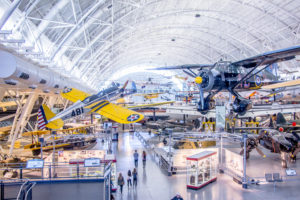Last summer, we had the chance to visit DC before we moved here in the fall. We filled our stay with sightseeing, sweltering heat and sandwiches, to name a few things. It was a wonderful trip and I got to do several things that had been on my to-do-before-i-die or in short, my bucket list. (Please excuse the formatting. When pasting from Wikipedia, it assumed its own formatting and I could not remove it.)
I have long been fascinated with all things Abraham Lincoln, and of course a trip to DC could not be complete without a visit to the Lincoln Memorial. Another dream come true for me as I climbed the stairs to the massive columns of the memorial. It was truly mesmerizing in its stature and its austere marble walls and floors lent it an hallowed feel. An impressive statue of Lincoln, seated on high, looking straight ahead at the nation that he fought to preserve.
This memorial was built to honor Abraham Lincoln, the 16th President of the United States. It is located on the west end of the National Mall. It was designed after ancient Greek temples, hence the massive columns and marble stonework. Lincoln was a symbol of honesty, integrity and humanity for the American people.
In Lincoln’s direct line of sight stands the Washington Monument across the Reflecting Pool. Also an impressive monument in its own right.
The Lincoln Memorial served as a site for many famous speeches, one of which was the famous ‘I Have a Dream’ speech by Martin Luther King delivered on August 28th, 1963.
The exterior of the Memorial echoes a classic Greek temple and features Yule marble. The structure measures 189.7 by 118.5 feet (57.8 by 36.1 m) and is 99 feet (30 m) tall. It is surrounded by a peristyle of 36 fluted Doric columns, one for each of the 36 states in the Union at the time of Lincoln’s death, and two columns in-antis at the entrance behind the colonnade. The columns stand 44 feet (13 m) tall with a base diameter of 7.5 feet (2.3 m). Each column is built from 12 drums including the capital. The columns, like the exterior walls and façades, are inclined slightly toward the building’s interior. This is to compensate for perspective distortions which would otherwise make the Memorial appear asymmetrical. (Taken from Wikipedia)
Another view of the Washington Monument from the steps of the Lincoln Memorial. Beautiful, isn’t it??
Lying between the north and south chambers is the central hall containing the solitary figure of Lincoln sitting in contemplation. The statue was carved by the Piccirilli Brothers under the supervision of the sculptor, Daniel Chester French, and took four years to complete. The statue, originally intended to be only 10 feet (3.0 m) tall, was, on further consideration, enlarged so that it finally stood 19 feet (5.8 m) tall from head to foot, the scale being such that if Lincoln were standing, he would be 28 feet (8.5 m) tall. The extreme width of the statue is the same as its height. The Georgia white marble sculpture weighs 175 short tons (159 t) and had to be shipped in 28 separate pieces.
The statue rests upon an oblong pedestal of Tennessee marble 10 feet (3.0 m) high, 16 feet (4.9 m) wide, and 17 feet (5.2 m) deep. Directly beneath this lies a platform of Tennessee marble about 34.5 feet (10.5 m) long, 28 feet (8.5 m) wide, and 6.5 inches (0.17 m) high. The statue is subtly bordered by two pilasters, one on each side. Between these pilasters and above Lincoln’s head stands the engraved epitaph, composed by Royal Cortissoz. (Taken from Wikipedia – where the descriptions are written better that I could have attempted to write for this blog entry.)
Abraham Lincoln’s Second Inaugural Address engraved on the walls.
The interior of the Memorial is divided into three chambers by two rows of Ionic columns. These columns, four in each row, are 50 feet (15 m) tall and 5.5 feet (1.7 m) in diameter at their base. The north and south side chambers contain carved inscriptions of Lincoln’s second inaugural address and his Gettysburg Address. There was an error in the engraving of the second inaugural address. In the line, “With high hope for the future,” the “F” of the word future was originally carved as an “E”. To cover the mistake, the bottom line of the E is not painted in. Bordering these inscriptions are pilasters ornamented with fasces, eagles, and wreaths. The inscriptions and adjoining ornamentation were done by Evelyn Beatrice Longman.
Above each of the inscriptions is a 60-by-12-foot (18 by 3.7 m) mural painted by Jules Guerin graphically portraying governing principles evident in Lincoln’s life. On the south wall mural, Freedom, Liberty, Immortality, Justice, and the Law are pictured, while the north wall portrays Unity, Fraternity, and Charity. Both scenes contain a background of cypress trees, the emblem of Eternity. The murals were crafted with a special mixture of paint which included elements of kerosene and wax to protect the exposed artwork from fluctuations in temperature and moisture conditions.
The ceiling of the Memorial, 60 feet (18 m) above the floor, is composed of bronze girders, ornamented with laurel and oak leaves. Between the girders are panels of Alabama marble, saturated with paraffin to increase their translucency. Despite the increased light from this device, Bacon and French felt the statue required even more light. They decided upon an artificial lighting system in which a louvered lighting panel would be set in the ceiling with metal slats to conceal the great floodlights. Custodians could adjust the lights from a control room varying them according to the outside light. Funds for this expensive system were appropriated by Congress in 1926, and in 1929, seven years after the dedication, the statue was properly lighted. Since that time, only one major alteration has taken place in the Memorial’s design. This was the addition of an elevator within the structure to aid handicapped visitors, which was installed in the mid-1970s. (Taken from Wikipedia).
The Gettysburg Address on the wall.
At the lower level of the Memorial is a museum dedicated to Lincoln’s life and his words.
Although much of the description in this post was borrowed from Wikipedia, in my own words, I truly enjoyed the experience of visiting this historical monument dedicated to a historic figure whose influence in this country will continue to be felt for many generations to come. A truly phenomenal man with an equally phenomenal vision and a love for his nation. I was humbled.




So glad that you got to see these things! No matter how many times I visit these amazing structures I'm always in awe! We are so blessed to live in D.C.!
So glad that you got to see these things! No matter how many times I visit these amazing structures I'm always in awe! We are so blessed to live in D.C.!
Chels, I totally agree! I am always in awe of the amazing people and the incredible imprint they leave on the world. We are certainly blessed to live in DC and enjoy all this around us.
Chels, I totally agree! I am always in awe of the amazing people and the incredible imprint they leave on the world. We are certainly blessed to live in DC and enjoy all this around us.